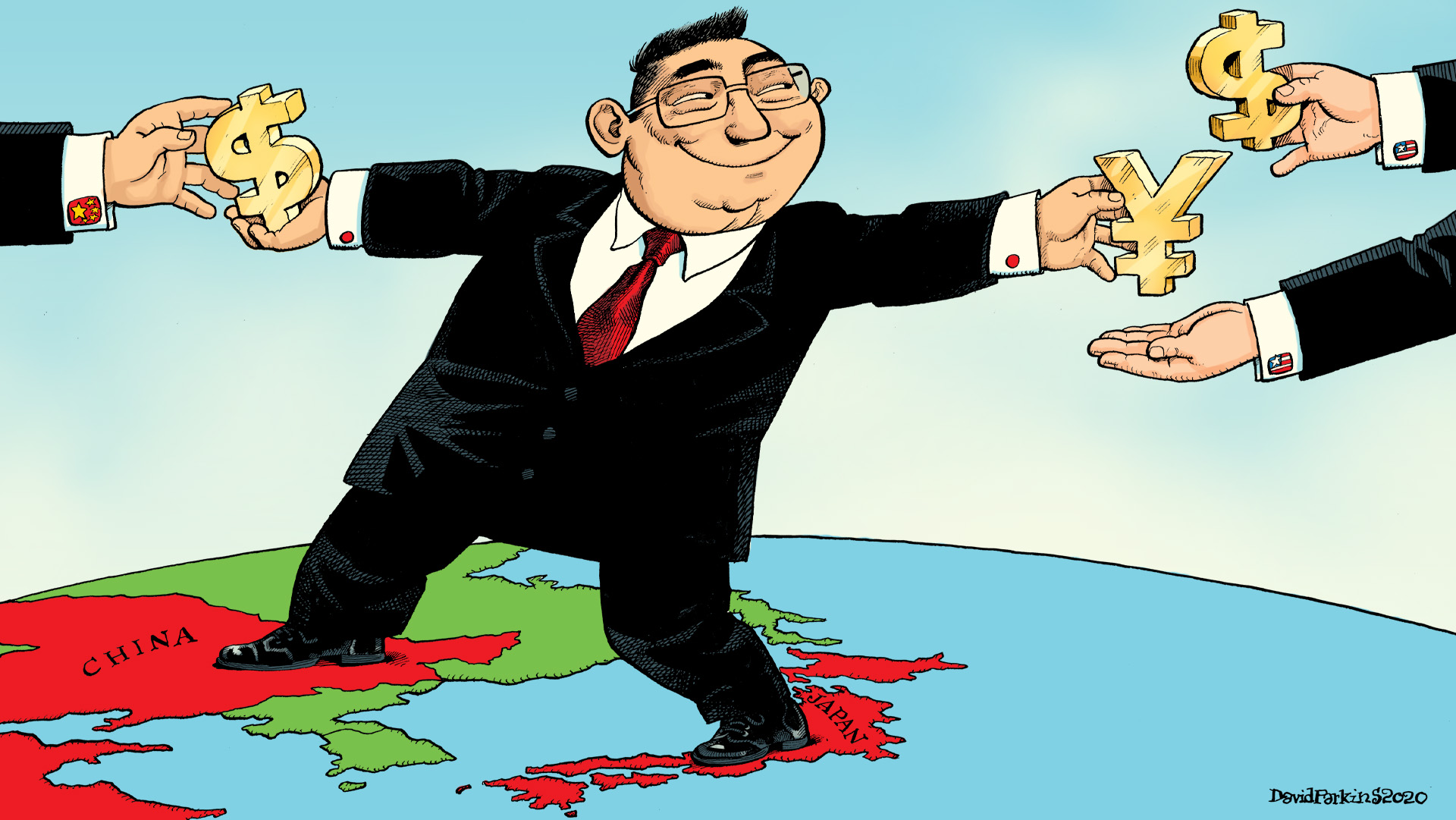———WHERE———
AlhambraTube: https://bit.ly/2Xp3roy
Apple: https://apple.co/3czMcWN
iHeart: https://ihr.fm/31jq7cI
Castro: https://bit.ly/30DMYza
TuneIn: http://tun.in/pjT2Z
Google: https://bit.ly/3e2Z48M
Spotify: https://spoti.fi/3arP8mY
Breaker: https://bit.ly/2CpHAFO
Castbox: https://bit.ly/3fJR5xQ
Podbean: https://bit.ly/2QpaDgh
Stitcher: https://bit.ly/2C1M1GB
Overcast: https://bit.ly/2YyDsLa
PocketCast: https://pca.st/encarkdt
SoundCloud: https://bit.ly/3l0yFfK
PodcastAddict: https://bit.ly/2V39Xjr
———WHY———
29.3 Dullest Market, Really a Synthetic Dollar Empire
The Wall Street Journal recently wrote, “The Japanese government bond market is rarely considered interesting. But beneath the placid surface… a thriving world of dollar funding, which offers hints about developments in China’s banking system too.” Jeff Snider tells us what it means.
[Emil’s Summary] Advanced-economy money centers make the world go round. In the early 1800s London and Paris funded globalization cycles. Berlin and Vienna joined the exclusive club as the century waned; New York at the start of the next. Today, East Asia’s cities are members, including Singapore and Hong Kong. But the 800-pound sumo wrestler of the Pacific basin is, and has been, Tokyo.
Some speculate it was there at the beginning of the eurodollar, putting overseas dollars, held by WW2 service members, to work. The subsequent, multi-decade growth miracle established Tokyo’s financial prowess. The 1980s brought disturbance early – the LDC Crisis – and euphoria later – the baburu keiki. When the bubble burst Japan’s dollar borrowings from US banks dropped by more than three-quarters by the end of the 1990s.
Then, in 1999, the Bank of Japan implemented the first modern zero interest rate policy. In 2001, the first quantitative easing. From it’s 1999 low Japan’s dollar borrowings from US banks doubled by 2004. Then doubled again by 2009. Then doubled again by 2011.
In part three of this, the 29th episode of Making Sense, Jeff Snider explains Tokyo’s role in the rise of a synthetic dollar empire and how disturbances within it, in early-2014 and late-2017, set off the third and fourth eurodollar crises. But first, thoughts about the rising appeal of socialism and words about the modern-day monetary tension between the ideas of 18th-century Scottish philosopher David Hume and 19th-century American financier Jay Cooke.
———WHEN———
00:05 Bill Dudley occupied critical positions at the Fed during 2007-18. He made mistakes.
03:01 Did QE ‘work’ via portfolio rebalancing? Or expectations policy? Bill Dudley wasn’t sure.
05:48 The epicenter of the third eurodollar disturbance (2014-16) was China, via Japan
10:16 What is the yen carry trade and why did the Wall Street Journal write about these shadows?
13:39 The Bank of Japan created reserves which were put to work by Japanese banks… in China.
14:23 The Wall Street Journal article is a sign of progress, the acknowledgement of the shadows
———WHAT———
Small But Real Progress Carrying The Yen Carry Trade Into the Light: https://bit.ly/3nc0J0J
How the World’s Dullest Market Quietly Created a Synthetic Dollar Empire: https://on.wsj.com/3l9FV8p
Alhambra Investments Blog: https://bit.ly/2VIC2wW
RealClear Markets Essays: https://bit.ly/38tL5a7


Stay In Touch